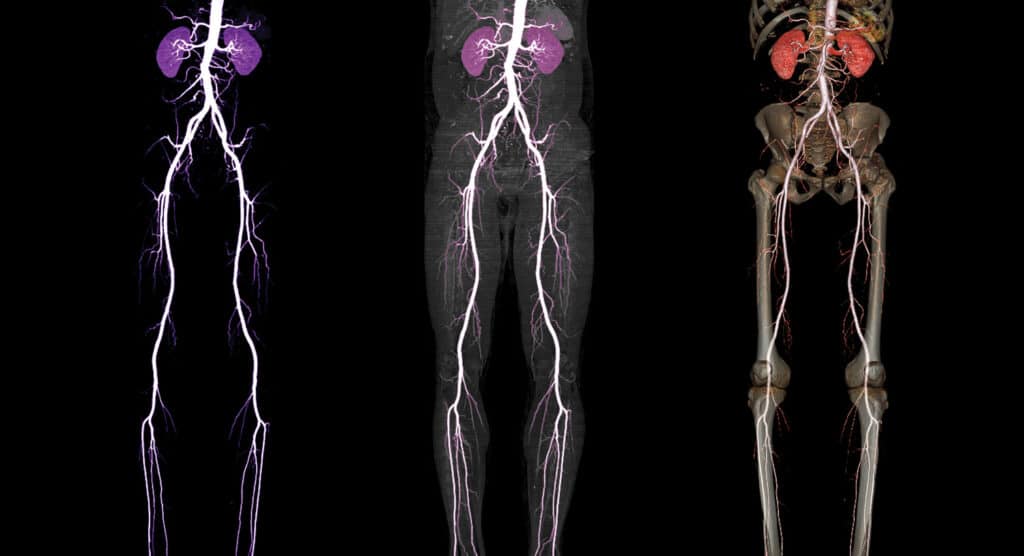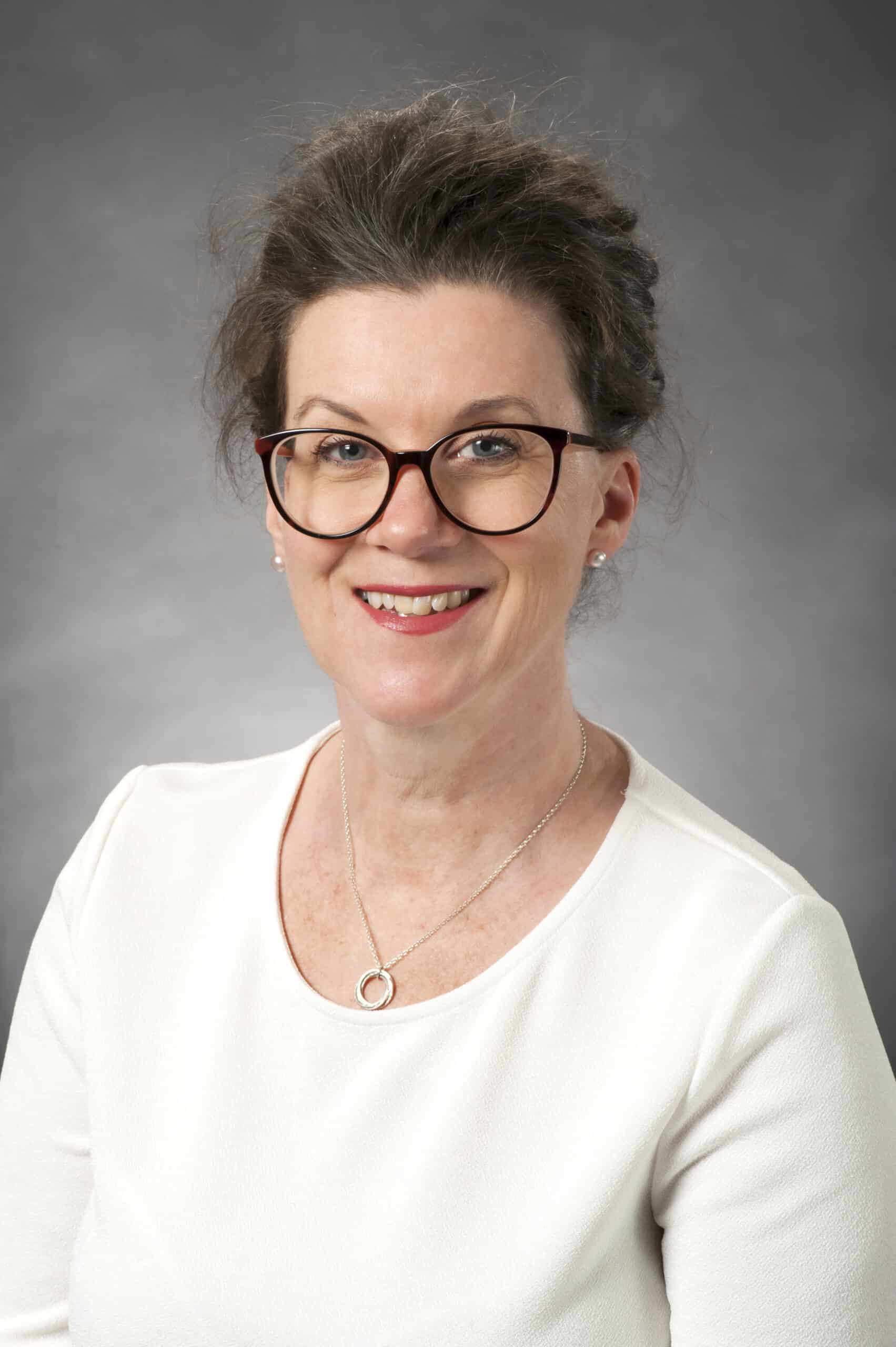
Excitement is palpable among Harry Perkins Institute researchers as they progress the approval stages of a drug that may have the damaging peripheral artery disease on the run.
First published by Medical Forum, and reproduced here with permission. By Eric Martin, 1 April 2024.
Every few decades a revolutionary discovery is made that changes the outcome of a chronic disease for millions of sufferers. Now, based on the results emerging from researchers at Perth’s Harry Perkins Institute, one such revolutionary breakthrough in the treatment of peripheral artery disease is about to be realised in WA.
Medical Forum spoke with the Perkins Institute’s Associate Professor Juliana Hamzah and vascular surgeon and Head of Department of Vascular and Endovascular Surgery at Sir Charles Gairdner Hospital Professor Shirley Jansen, about what could be the biggest advance in the treatment of atherosclerosis since the invention of statins at the end of the 1970s – and one that potentially dwarfs them – the very real chance of a cure.
Compared to coronary artery disease (CAD) and cerebrovascular disease (CeVD), PAD is underappreciated, even though it affects over 230 million people worldwide and is associated with the highest morbidity and mortality rates globally.
Patients with symptomatic lower-extremity PAD generally have more extensive atherosclerosis than those with CAD or CeVD and, despite improved treatment options, the mortality rate in patients with PAD is substantially greater than in the general population – twice the rate in those with intermittent claudication [IC].
“Over time, it can progress to what we call chronic limb threatening ischemia, or CLTI, which is the most severe end of the spectrum where the limb is threatened. In that group of CLTI patients, their mortality is worse than many cancers and fivefold the general population rate,” Professor Jansen said.
Compared to CAD, patients with PAD also have a 1.5 to twofold greater risk for major adverse cardiovascular or limb events (MACEs or MALEs) and those risks increase alongside disease severity: in a contemporary series of Australian patients with greater-risk PAD, manifested as CLTI, the rate of MACEs and MALEs was 22.6% and 57.2% over 2.5 years, respectively.
“Roughly a fifth will have a cardiac event such as a heart attack in their lifetime and roughly two thirds of them will have an adverse lower limb event, which may mean amputation. In Australia, the cost is $1 billion a year – that’s 20,000 endovascular procedures a year, 5000 open operations for bypass surgery and 1800 legs amputated,” Dr Jansen said.

“Similarly, revascularisation of CLTI limbs forms a large part of our work in vascular surgery now and what we spend the most time treating at Sir Charles Gairdner Hospital.”
PAD is increasing worldwide with a prevalence that grew >20% over the past decade, with even steeper increases expected for the next decade because of the ageing population and the increasing prevalences of diabetes and obesity – not to mention the rise of smoking in developing countries.
“The rapid increase in diabetes as an accelerant of PAD is bringing it into focus more and more,” Dr Jansen explained.
“There’s a significant overlap between PAD and diabetes but diabetes is slightly different because it also has a predilection for smaller vessels and the microcirculation which is why we see retinopathy and nephropathy for example, but also diabetic foot with ulceration and the need for minor and major amputation.”
“The amazing development we would like to share is that we think we might have a drug that can fix this problem,” Professor Hamzah said. “We actually designed this drug initially for treating cancer. We know that it can work in cancer by improving blood vessel circulation to increase drug uptake by tumours.
“We stumbled upon this while investigating a drug for older cancer patients with cardiovascular comorbidities as cancer drugs nearly always cause cardiovascular issues. It was intended that we could give this drug in combination with cancer therapy to high-risk patients to improve safety and efficacy.
“And that’s where Shirley and I have teamed up for the past 10 years. Our goal was to reduce the risk of vascular events, prevent amputation and reduce hospitalisation.
“Amputation is a major problem – some people would rather die than lose a leg. Australia has the second highest amputation rate in the developed world after the US.”

The past few years have seen the widening of the armamentarium of interventionalists from simple angioplasty, stenting, thrombolysis and open bypass grafting to endovascular devices such as atherectomy, laser, cryotherapy, ultrasonic ‘shockwave,’ drug-coated balloons and stents, and absorbable scaffolds.
However, although existing antithrombotic therapies can lower cardiovascular risk, their net effectiveness can be limited by bleeding complications, and while lipid-lowering medications such as statins are strongly recommended in global guidelines, they do not actually remove the build-up of plaque from the arteries.
“All have their advantages and limitations from not only the technology itself and its applicability but also the heterogenous nature of PAD lesion location, length, and calcium load,” Professor Jansen said.
“Similarly, all these invasive treatments are not curative but merely aim to treat crucial limb-threatening events, prevent new ones, or temporise symptoms in a population in whom the risk for needed repeat interventions is high.
“Even if you stop smoking, exercise regularly, are not overweight, manage your diabetes, take antihypertensives and aspirin and statins, or other drugs for your dyslipidaemia, there is still a significant residual risk, because none is curative. And we all know how difficult it can be for many patients to be compliant when taking multiple preventative drugs every day.”
About half of patients with symptomatic PAD require lower extremity revascularisation (such as bypass surgery, angioplasty with stent insertion, or atherectomy or thrombectomy) during their lifetimes, either electively to treat symptoms of severe claudication, or to save limbs in patients presenting with acute limb ischemia or CLTI.
“But counterintuitively perhaps, revascularisation does not improve overall vascular prognosis, as it does not address the underlying vascular risk. Indeed, there is an even greater risk for MACEs or MALEs in patients who have undergone revascularisation,” Dr Jansen said.
“Lipid metabolism is complex, and the lipid content of plaque is not only cholesterol,” Professor Hamzah elaborated.
“Once you have advanced disease, it’s already too late because lipids have accumulated in the arterial wall, and they are now complex lipids converted into esters from circulating lipids. They mix with glycogen, glycerol, and other compounds before being converted into solid crystals, for example.
“What is clear is that there is currently no drug that breaks down lipids once they are taken up by the cells, and there is no agent that can target lipids in the vessel wall specifically.”
Even though researchers have tried to target plaque previously, none have succeeded, she said, a factor that might be, in part, due to their lack of specificity to the foam cells in the plaque.
“We have patented a drug, developed here at the Harry Perkins Institute that is a reconstructed fusion protein, two proteins joined together, consisting of a biologic agent and ligand that has specific recognition to a receptor that is aberrantly expressed in lipid-enriched cells (foam cells) in the arterial wall.
“Hence, this agent, once it enters the blood circulation, targets and accumulates in the arterial wall where lipid deposits and plaques are located.
“That chemical sensor is the key to targeting this drug effectively. It accumulates very well with an excellent biodistribution profile in plaque relative to normal healthy tissue. It congregates on those areas where it is needs to be, and that is exactly what we engineered it to do.
“We know by looking at Professor Jansen’s patient samples from surgery where patients have had plaques removed from their carotid arteries to prevent stroke, all of them seem to show recognition of this drug in lipid-rich regions.
“The original protein is actually naturally produced in our body. When we have a disease, this protein is produced in a high amount and acts on multiple cell types. We reprogram it differently to produce an exclusive effect on lipid-loaded cells, without toxicity.
“Its action is highly reproducible throughout the entire arterial system, including the small vessels, and we now know how our drug triggers the cell to metabolise the lipids.”
Professor Hamzah explained that because this novel treatment works by breaking down the chemistry of the lipid itself, using its own processes to do so, the drug effect is specific to plaques.
“We have measured biomarkers for systemic toxicity, we’ve looked at changes in the arterial wall, blood pressure, etc. When we looked at the baseline clinical markers that we measure in patients who have problems with toxicity and also in a cardiovascular event (such as creatinine kinase, Mvc2, and uric acid), we could see that the levels were the same as those for the healthy control group.”
The drug is currently undergoing regulatory requirements for approval and commercialisation, but once it is ready for release, both women believe that it could revolutionise treatment for PAD globally.
“Of course, the ideal scenario would be for humans not to get PAD in the first place. However, for those patients who progress despite risk factor management and healthy living, this drug could be an option,” Professor Jansen said.
“There’s no reason to think that this could not be a GP prescribed drug, though it will definitely be in the domain of specialists to begin with.”
“The challenging part of bringing a new drug to market is convincing funding bodies that you have a strong contender,” Professor Hamzah explained.
“Even though this is a potential blockbuster, it was tough to convince ourselves and then other people that it was possible to safely and effectively dissolve atherosclerotic plaques. It took us 10 years to replicate the pre-clinical studies that work each time. Only now, I feel more convinced that it’s not a fluke or chance.
“It’s not completely 100% guaranteed, but it’s a ‘first in class’ situation, there is nothing else to compare it with.
“We still have challenges ahead with the human protein – such as, how conserved is the effect of the drug in a human? So that’s our focus now.”
“All the medical management and procedures we have for PAD and CLTI are good, but they are not curative,” Prof. Jansen concluded. “We’re thinking about applying the word cure to a pathology that has never had the concept applied to it. And, if it continues to prove itself, that will mean a dramatic difference to millions of people.”
Read the original article on Medical Forum website.
